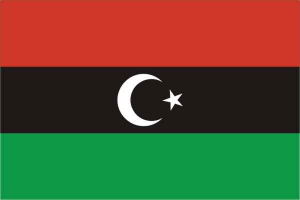Language/Libyan-arabic/Vocabulary/Colors
Hi Libyan Arabic learners! 😊
In this lesson, we will learn the names of colors in Libyan Arabic. Colors are an essential part of our lives because they help us to describe the world we live in. We will also include interesting facts and cultural information about color perception in Libya.
Let's get started!
Consider exploring these related pages after completing this lesson: Say Hello and Greetings in Libyan Arabic, How to Say Goodbye in Libyan Arabic, Animals & Clothes.
Basic Colors[edit | edit source]
Colors are often used in idiomatic expressions in Libyan Arabic. For instance, you might hear someone say "Ana lbanafseg" (I'm violet) or "Ana abyaD" (I'm white), which means you are feeling a certain way. Here are the basic colors in Libyan Arabic:
| Libyan Arabic | Pronunciation | English |
|---|---|---|
| Aswad | ʾaswad | Black |
| Beidh | baiḍ | White |
| Ahmar | ʾaḥmar | Red |
| Akhdar | ʾakhdar | Green |
| Asfar | ʾasfar | Yellow |
| Burtuqali | burtuqāli | Orange |
| Zambar | zambār | Purple |
| Banafsaji | banafsāji | Violet |
| Khaki | khākī | Khaki |
| Ardaa'i | 'arḍa'ī | Brown |
Fun fact: In Libya, the color green is associated with Islam and the Libyan revolution that overthrew the previous regime in 2011. The current Libyan flag has a green stripe, and you can see green flags and banners at rallies and celebrations.
Additional Colors[edit | edit source]
Now, let's learn some additional colors in Libyan Arabic:
| Libyan Arabic | Pronunciation | English |
|---|---|---|
| Hamra' sameetha | ḥamrā' sāmīthā | Dark red |
| Fuchsi | fuchsi | Fuchsia |
| Malakhi | mālakhi | Malachite |
| Kroman | kroman | Chrome |
| Hilyooni | hilyūnī | Lilac |
| Qanoodhi | qānūdhī | Turquoise |
| Falastini | falasṭīnī | Palestnean |
| Bahanee | bahānī | Maroon |
Cultural fact: In Libyan culture, the color black is associated with mourning and grief. When someone dies, their family wears black clothing for a period of time to express their sadness and loss.
Colorful Expressions[edit | edit source]
Colors are often used in colloquial expressions in Libyan Arabic. Here are a few examples:
- Sibna khamsa wa khamsa (literally: We dyed it fifty-fifty) - used to express a shared responsibility or cost between two people
- Nwir alby (literally: Lighten my heart) - used to express gratitude or joy
- Fidak abyaD (literally: Your silver) - used to flatter someone
Let's see these phrases in context:
- Person 1: Sibna khamsa wa khamsa, we'll split the bill
- Person 2: Tamaam, sibi ahmar.
- Person 1: Excellent, dye it red.
- Person 1: Nwir alby, thank you so much for your help
- Person 2: La shokran 3ala wejdi, no thanks needed, it's my pleasure
- Person 1: Fidak abyaD, you look lovely today!
- Person 2: Yalla, you're just saying that!
Dialogue[edit | edit source]
- Person 1: Tqalat mnek hadha far'?(What color is this car?)
- Person 2: Hadha alfar' ahmar (This car is red)
- Person 1: Ana hbath al-lbisan al-khadhra (I'm wearing the green shirt)
- Person 2: Yuma ykhayi, ntethker leekom qeema. (Oh my brother, I remember your value)
- Person 1: Ay far' btedhkerha b hajatk?(Which color do you need?)
- Person 2: Baddi baani zsawsy 'akhli baDil fuchsi (I want to paint my room in fuchsia)
Conclusion[edit | edit source]
In this lesson, we have learned the names of colors in Libyan Arabic. Colors are essential for describing our world and expressing our feelings. We have also included cultural and interesting facts about color perception in Libya. Remember, to improve your Libyan Arabic Vocabulary, you can also use the Polyglot Club website. Find native speakers and ask them any questions!
➡ If you have any questions, please ask them in the comments section below.
➡ Feel free to edit this wiki page if you think it can be improved. 😎
<html>
Finished this lesson? Check out these related lessons: Fruits, Family, Express Surprise & Health. </html>

